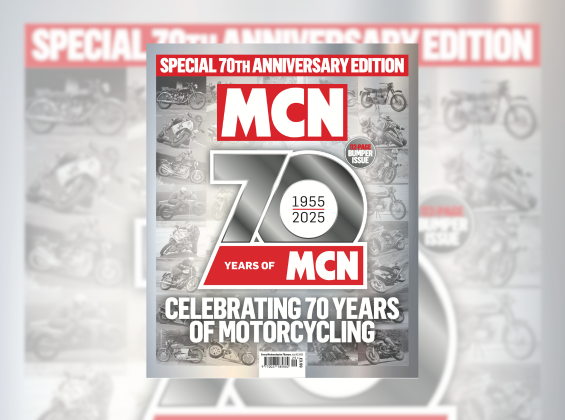
Publisher data partnership with Ocado Ads
Immediate and Future are amongst several publishers who have announced a move into retail media with Ocado Ads and Permutive partnership.
Industry News, Industry Voices
Industry News, Industry Voices
Julian Linley, media consultant, shares his key insights from the day.

AI dominated the agenda this year and Mel McVeigh, VP Product, Global Brands and Commerce at Condé Nast, wrestled with the industry’s core challenge: will AI replace the role of creativity? The interest we all have in that question was demonstrated by the standing-room-only attendance.
Nuance is everything: “AI is driven by keywords. It doesn’t understand a narrative mindset, and it doesn’t cater for spontaneity.”
AI tools produce literal answers based on what existed in the past. “It’s not built around that beautiful nuance you’d have found in a magazine” Mel told us. Magazines had narrative structures, just like fiction, whereas digital can be: one click, one article, one view… but Mel asks, do we really want to read the same sort of article ten times? She believes we need to go beyond classification to give consumers what they want, based on what they’ve looked at before, but also provide that nuance. “How can we personalise at the individual level where people get to see new things and be random?” Mel’s view is that the tools we currently rely on are limited and suggests we should be more creative in the conceptual questions we’re asking of them, if we want better answers, that lead to better content for consumers.
Tech creates a collective consciousness, it’s not always as smart as we think it is – originality will triumph.
Machine learning uses information to produce results that are consistent, it’s not designed to push creative boundaries. Instead, it gives you an answer that will statistically provide better engagement. But whoever asked a consumer if they want generic, average answers? When this is fed into publishing products, the recommendations are “same, same, same, same, same – everything starts to look the same, trend the same, feel the same” because that is we’ve trained it to think. As boredom sets in, consumers will look for content elsewhere. We need to design products that challenge the paradigm and find the middle ground between data and intuition. “Some of the best content we produce is based on intuition, passion and creativity,” Mel told us. AI may help us to tell stories, but it will never distract from the creativity that sits at the heart of everything we do. We need to unlock the technology to help us tell those original stories better.
Keep the bigger picture in mind – is your content strategy sustainable?
Mel also reflected that we’ve built digital businesses using data and insights, but believes audiences are starting to look for something more – and that we’re not ready for that. “We’re all chasing engagement models, measured on time spent and unique visitors. But some of the highest performing content at Condé Nast is original content. It’s come from a creative person who wants to try something new – and it blows up the internet.”
Mel also posed the question, is it time to go beyond the content model? Explaining that publishers currently serve consumers galleries and articles on their websites, and while they do drive engagement and revenue, she suggested we should think less about single assets and more about richer stories and narrative structures that unfold over time and provide deeper experiences for our readers.
Lisa Smosarski, Editor-in-Chief of Stylist, interviewed lawyer and women’s rights activist, Dr Shola Mos-Shogbamimu on the importance of standing up for what we believe in, in an age of cancel culture and how, as journalists, we play a powerful role in influencing the way people think and feel.
It is our job to challenge the status quo.
How many of us are unhappy about the world we live in, or feel there is an injustice that needs righting? “You have an opportunity to do things differently,” Shola told the audience. “We all work in systems that were created before we were born, so why do we continue to uphold those systems and do things the way they’ve been done before?” Shola encouraged us to challenge the status quo and use the skills we have as journalists, to bring about the change we want to see for ourselves and for society.
It’s a balancing act
The world we live in isn’t binary and two things can be true at the same time. Shola spoke of the importance of thorough research and being clear about the point of view we are trying to make – but at the same time understanding that not everyone is going to agree. And that’s OK. “I am rooted in knowing who I am and therefore I am not shaken,” Shola told us. “Freedom of speech doesn’t give you freedom from accountability – be ready for the consequences of what you say.” Rather than running away from difficult conversations, Shola encouraged writers and editors to use the energy of being triggered to move forward. “There are some spaces that don’t deserve you,” said Shola. “But there are platforms where you can oppose, and your viewpoint will land.”
Don’t be afraid of your weaknesses
Shola is motivated by bringing balance to the dominant voice in media, and fearlessly takes on high-profile journalists like Piers Morgan, “it’s not about competition, it’s about balance,” she told us. Bravery is stepping into your fear and doing what is needed. Shola also encouraged us to understand our weaknesses and ignorance and not to be afraid of uncomfortable conversations – a good place to start is with the people that we trust. Emotions often run high in conversations on social media, but Shola encouraged us to see that as a good thing. “It is powerful – don’t shut it down. Try to address something in the discourse. Address the nuance… when nuance is lost, ignorance thrives.”
A global pandemic, the cost-of-living crisis, the Ukraine war – there is a lot going on in the world, but how are these big events impacting our consumers and the content they expect from us? Lucie Cave, Bauer’s Chief Creative Officer, revealed Bauer’s latest research about the nation’s mood and how it’s effecting editorial and business planning at different times of the week. She was joined on stage by Adam Binnie, Affiliate Operations Editor, Rebecca Holman, Digital Director of Grazia, and Tim Pollard, Group Digital Editorial Director.
What we need when we need it
One of the most surprising things to be revealed by the research is that consumers are generally happier now than they were pre-pandemic. Rebecca told us that at Grazia they’ve noticed their social audiences respond best to content that offers something tangible or gives clear advice on how to move forward. “Active content that helps them to feel positive” really resonates. “On Mondays, it’s about motivation and feeling good about the working week, whereas on Fridays it’s all about memes”. Understanding how their audiences are feeling at any given time of the week has allowed Bauer to prioritize content at a time when it will land best. “We’re giving consumers what they really need, rather than what we think they need,” explained Tim. Adam told us how the research has even impacted on how Bauer operate as an organisation, “Monday is a stressed and anxious day, so planning meetings now take place on a Tuesday, as this tends to be a more relaxed day when people feel more open.”
Brands still signify expertise, authority, and trust
If audiences are more interested in content that speaks to the specific mood that they’re in, how important are publishing brands – couldn’t the content just come from anywhere? Tim argued that brands still hold a huge amount of power for consumers, especially in an age AI. “A Google listing page is a bit of a wild west – you don’t really know what you’re clicking on. Adam added that the further through a purchasing journey a consumer gets, the more important brands become, “When you’re in the research phase you want as much information as you can get, but the closer you get to making the purchase the more likely you are to hone-in on a site that has real authority”.
Mood influences how and when people shop
Despite general feelings of positivity, the research also revealed that a third of people have a worse work-life balance than they did before the pandemic, and that this is impacting their purchasing habits. Weekends have become a “sanctuary of free time,” Adam told us. “The last thing people want to do at the weekend is look at mattresses on a screen they’ve been staring at all week. They want to be out on their bikes!” Functional purchases are now more likely to be made on a Thursday or a Monday. The research also revealed that golfing fans are more likely to be feeling angry on a Monday, and that this is when they were most likely to buy new kit of golf balls, to help them improve their game. For Grazia, it’s all about Friday nights when people are really engaged in shopping content. Rebecca hypothesized they’d “been to the pub for a few drinks, and then they get home and start clicking, so we pushed out more shopping content then!”
The content stage was sponsored by Shutterstock Editorial.

Immediate and Future are amongst several publishers who have announced a move into retail media with Ocado Ads and Permutive partnership.

The special issue contains the latest biking news plus biggest moments from the past seven decades, including a special Issue One pullout.
Chancery House, 53-64 Chancery Lane, London WC2A 1QS




If you have a member login, enter your details below. Please note, that your login is for PPA.co.uk only and not for our event sites.
If you are a member but don’t have an account yet, you can setup your account here.
Any problems, please contact membership@ppa.co.uk.